Wildflower Oddities
mycotrophs & carnivors
Unlike animals, plants can make their own food. The green colour of plants comes from chlorophyll, a chemical that enables plants to employ the energy of sunlight to combine carbon dioxide from the air with water from the soil to produce carbohydrates (sugars). The process is called photosynthesis, a byproduct of which is the release of oxygen. The carbohydrates are the food which fuels the plants—and through them, all animals, and even cars and airplanes. To accomplish this, plants also absorb nutrients from the soil, elements such as nitrogen and phosphorous.
Or at least this is the pattern for the vast majority of plants. A handful of flowering plants have abandoned chlorophyll and so no longer make their own food; they are the mycotrophs (or myco–heterotrophs). Another group of plants grows in such nutrient–poor soil that they supplement their diet with insects; they are the carnivores. Wildflowers which are either mycotrophs or carnivores are distinctly uncommon, but they can be found locally.
Mycotrophs
The mycotrophs, or myco–heterotrophs, obtain their carbohydrates indirectly from another plant (say, a tree), but through an intermediary, a mycorrhizal fungus. Older sources sometimes called these plants parasites and sometimes saprophytes, but apparently those terms are bad fits to how the plant gains its food (see Strange and Wonderful Myco-heterotrophs). Be that as it may, while this interesting group of plants does have flowers, its lack of chlorophyll means it is without a green pigment. Further, as the plants do not need sunlight, they can grow on the dark forest floor where other small plants struggle to survive. In this way they have successfully carved out a niche where they outcompete other small plants. This page shows three local mycotrophs: indian pipe, pinesap, and coralroot orchid.
Carnivors
A carnivorous plant takes essential nutrients from insects rather than from the ground (but gains its food through normal photosynthesis). It is usually fairly expensive for a plant to do this. In the case of the local butterwort, the leaves must serve two functions rather than one. Leaves gather sunlight and photosynthesize, but they also must attract, capture and digest insects. In nutrient–rich soil, this split role makes each activity less effective, so the carnivorous plant is less competitive. But in nutrient–poor soil they can thrive where other plants struggle or fail. This page shows only one local carnivore: the butterwort.
All in all, these plants exhibit behaviour outside the norm for local wildflowers. This makes them especially interesting to encounter.
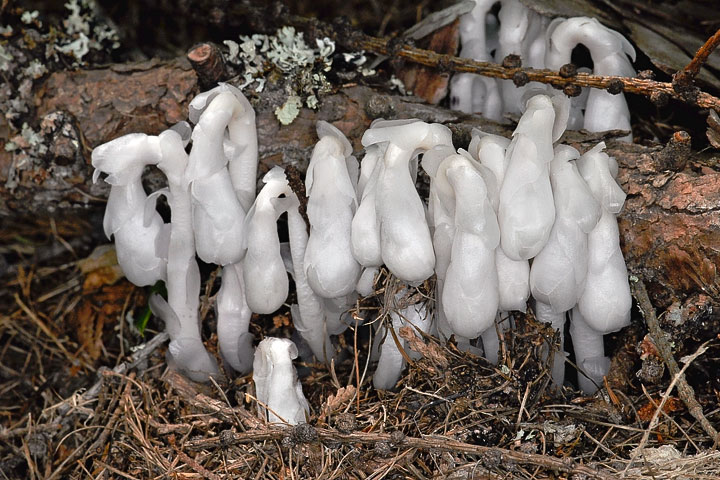 The ghostly white of the indian pipe (Monotropa uniflora) reveals its lack of chlorophyll. The plant grows in clusters with one flower usually bending from the top of the stock. Not requiring sunlight, it is found, when found at all, in the darkest portions of the forest floor. I have found it in various places around the Lake, but it certainly is not prolific.
The ghostly white of the indian pipe (Monotropa uniflora) reveals its lack of chlorophyll. The plant grows in clusters with one flower usually bending from the top of the stock. Not requiring sunlight, it is found, when found at all, in the darkest portions of the forest floor. I have found it in various places around the Lake, but it certainly is not prolific.
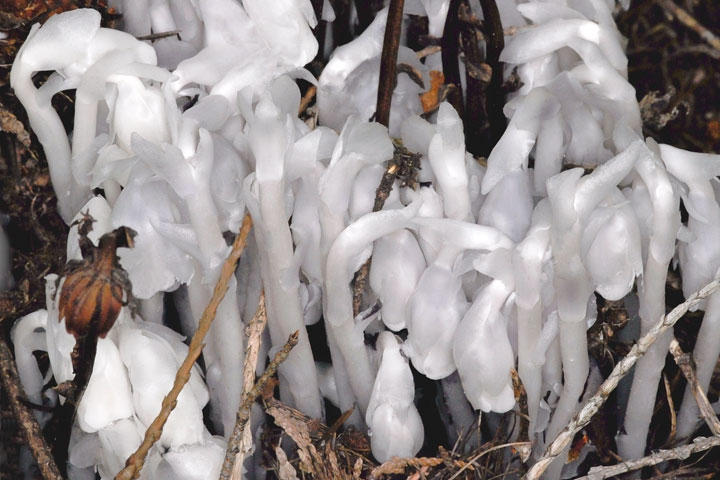 The white of the indian pipe contrasts with the dark forest floor.
The white of the indian pipe contrasts with the dark forest floor.
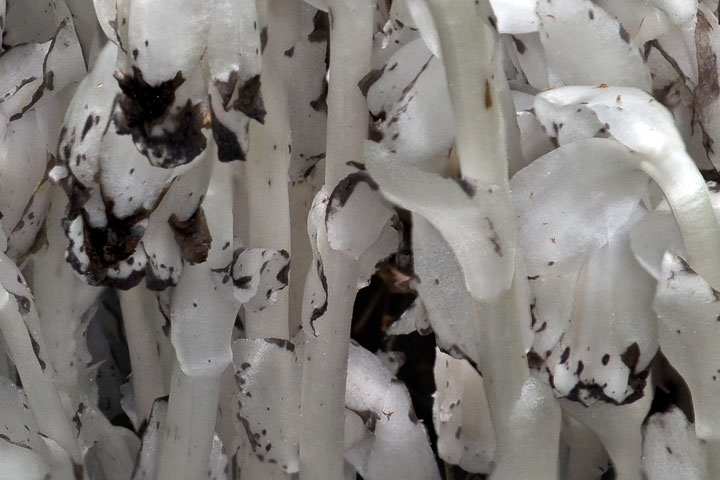 The indian pipe blackens with age, ultimately becoming entirely black.
The indian pipe blackens with age, ultimately becoming entirely black.
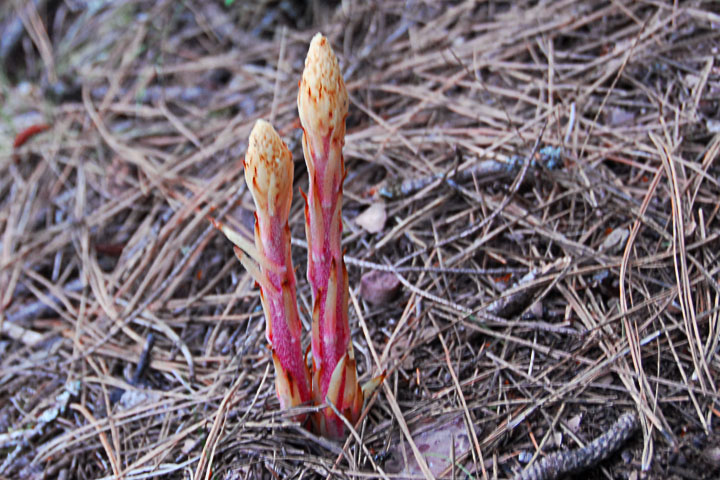 The pinesap (Monotropa hypopithys) is not only a close relative of the indian pipe, this one was found in the vicinity of its cousin. The flowers on this one have yet to open, making it look rather like an asparagus without any green colouring.
The pinesap (Monotropa hypopithys) is not only a close relative of the indian pipe, this one was found in the vicinity of its cousin. The flowers on this one have yet to open, making it look rather like an asparagus without any green colouring.
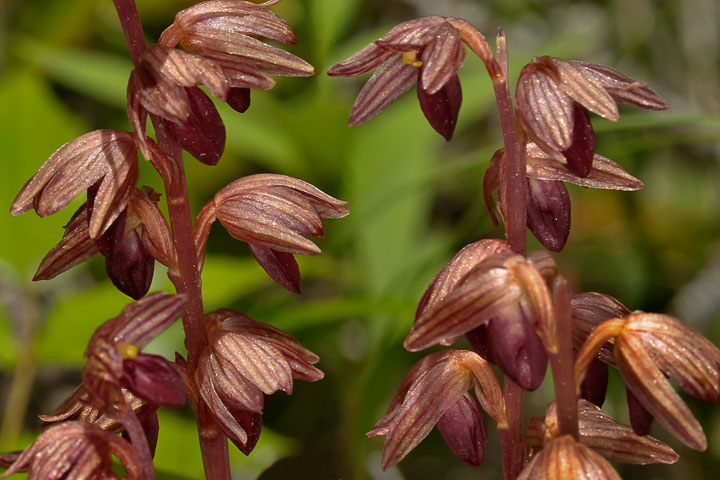 The striped coralroot (Corallorhiza striata) is a local orchid that, lacking chlorophyll, has largely abandoned leaves. Again, this wildflower isn’t easy to find, but it is here.
The striped coralroot (Corallorhiza striata) is a local orchid that, lacking chlorophyll, has largely abandoned leaves. Again, this wildflower isn’t easy to find, but it is here.
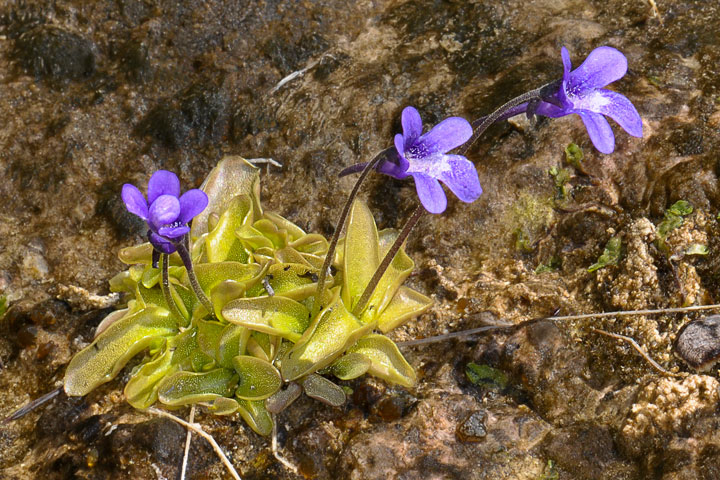 As the Monty Python skits would have it, now for something completely different: a carnivorous plant. The butterwort (Pinguicula vulgaris) grows in nutrient poor soil, usually an acidic bog, and there it can outcompete other plants, those that require nutrients from the soil. The glandular leaves of the butterwort lures, traps, and digests insects in order to gain their nutrients. Some hulks of insects can be seen on these leaves.
As the Monty Python skits would have it, now for something completely different: a carnivorous plant. The butterwort (Pinguicula vulgaris) grows in nutrient poor soil, usually an acidic bog, and there it can outcompete other plants, those that require nutrients from the soil. The glandular leaves of the butterwort lures, traps, and digests insects in order to gain their nutrients. Some hulks of insects can be seen on these leaves.
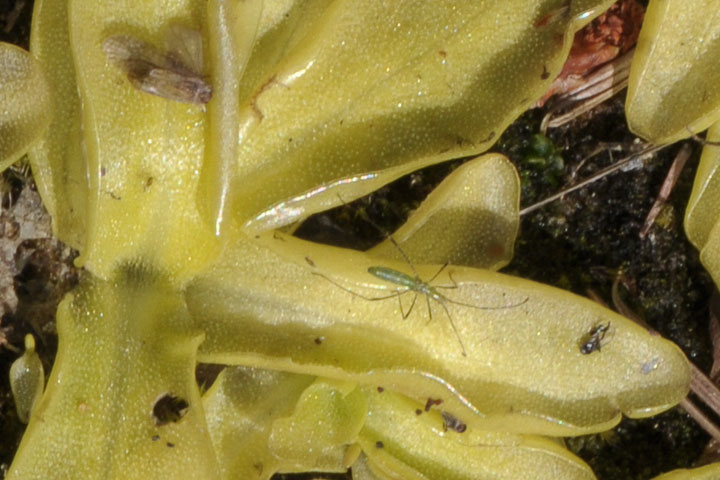 Insects at various stages of being digested lie on the butterwort leaves.
Insects at various stages of being digested lie on the butterwort leaves.
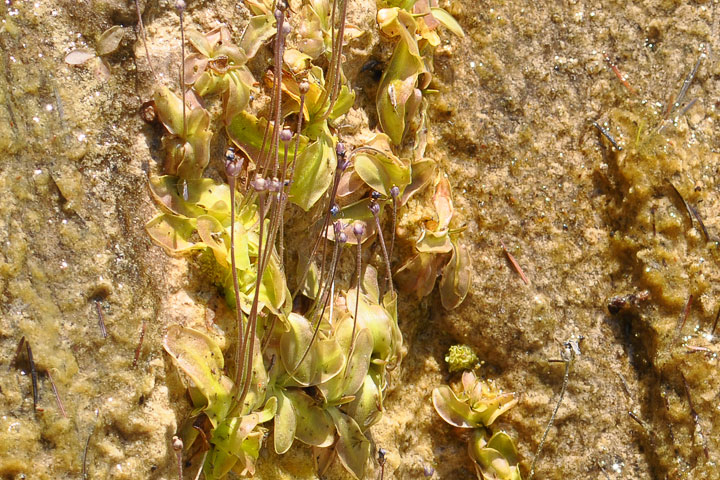 Water seeping down a chalk cliff presents an environment where ordinary plants cannot obtain nutrients. But, the butterwort survives there by digesting insects.
Water seeping down a chalk cliff presents an environment where ordinary plants cannot obtain nutrients. But, the butterwort survives there by digesting insects.
Information from Wikipedia: Myco–heterotrophy, Carnivorous plants.
![]()